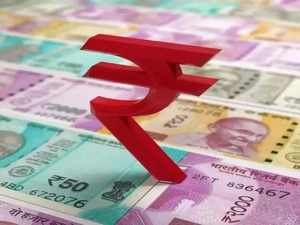On Wednesday, the rupee continued its stellar rise. It has gained 1.5% so far this week as foreign investment flows have continued to hit the currency market and dollar demand from oil companies has decreased, according to dealers.
On Wednesday, the rupee closed at 81.58 per US dollar, down from 81.79 per dollar the previous day. The domestic currency closed last week at 82.78 per US dollar.
According to traders, the rupee has outperformed all of its emerging market peers in the last few days. This contrasts sharply with the previous month, when the domestic currency performed worse than all of its peers.
“Historically, the rupee has always been peculiar. The narrower it trades, the more lethal it becomes for a breakout either side. Considering DXY (dollar index), Chinese Yuan, and oil, it was expected that the USD/INR pair may trade below 82 levels with time. Stop losses getting triggered help the rupee appreciate sharply,” said Kunal Sodhani, vice-president of Shinhan Bank (Global Trading Centre).
Apart from firm foreign flows, the strengthening of hopes of the US Federal Reserve slowing down the pace of its rate hikes and a lack of significant dollar purchases by the Reserve Bank of India (RBI) contributed to the rupee’s recent run, dealers said.
“The USD/INR pair has gained in recent days on dollar weakness, some bunched up foreign inflows and lack of intervention by the RBI below 82 levels that led to further increase in the appreciation momentum,” according to HDFC Bank’s treasury research team.
Higher US interest rates strengthen the dollar, putting pressure on emerging market currencies such as the rupee. To combat high inflation in the United States, the Federal Reserve raised interest rates by 425 basis points in 2022.
The Indian central bank was said to have replenished its dollar reserves by purchasing the greenback in November and December. This kept the rupee within a narrow band and limited any appreciation in the local currency.
After falling by around $100 billion from late February to September 30, the RBI’s foreign exchange reserves increased by $30 billion by December 31 to $562.85 billion.
The Reserve Bank of India’s reserves fell sharply in 2022, owing in part to the sale of dollars to prevent excessive volatility in the rupee during the Ukraine war and the US Fed’s monetary tightening. Due to revaluation, the strength of the US dollar also dragged down the RBI’s reserves. In 2022, the rupee fell 10.2% against the US dollar.
Analysts were divided on how far the rupee could rise from its current levels, given the persistent global headwinds.
“However, we do not see these gains sustaining over the coming days. Given the rising risks in the system, including uncertainty around the Fed rate hike path, global recession fears, and the China re-opening effect – all make a case for a breakout from this range and a shift higher over the coming weeks,” HDFC Bank’s treasury research team wrote. HDFC Bank forecasts a near-term range of 81.50-83.50 per US dollar for the rupee.
Source:BS







 Finance
Finance





